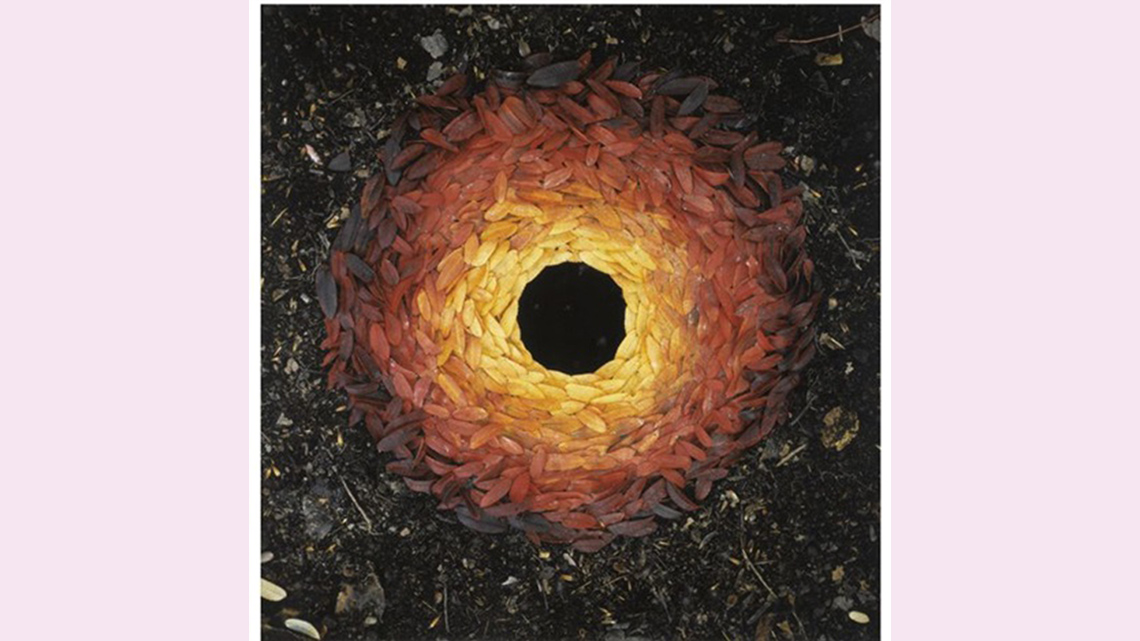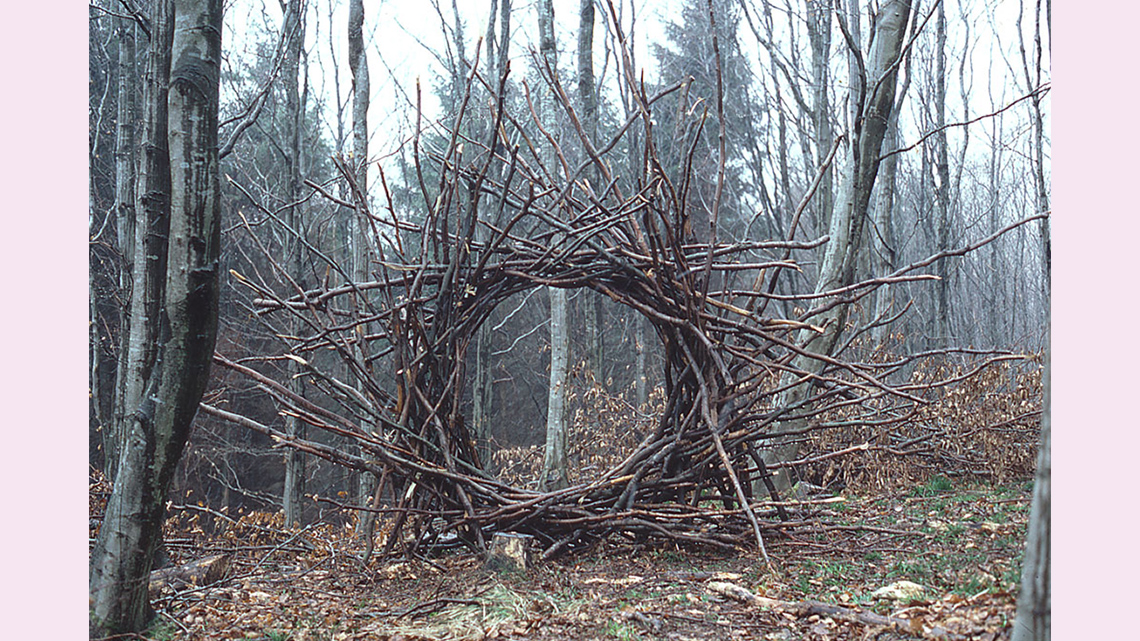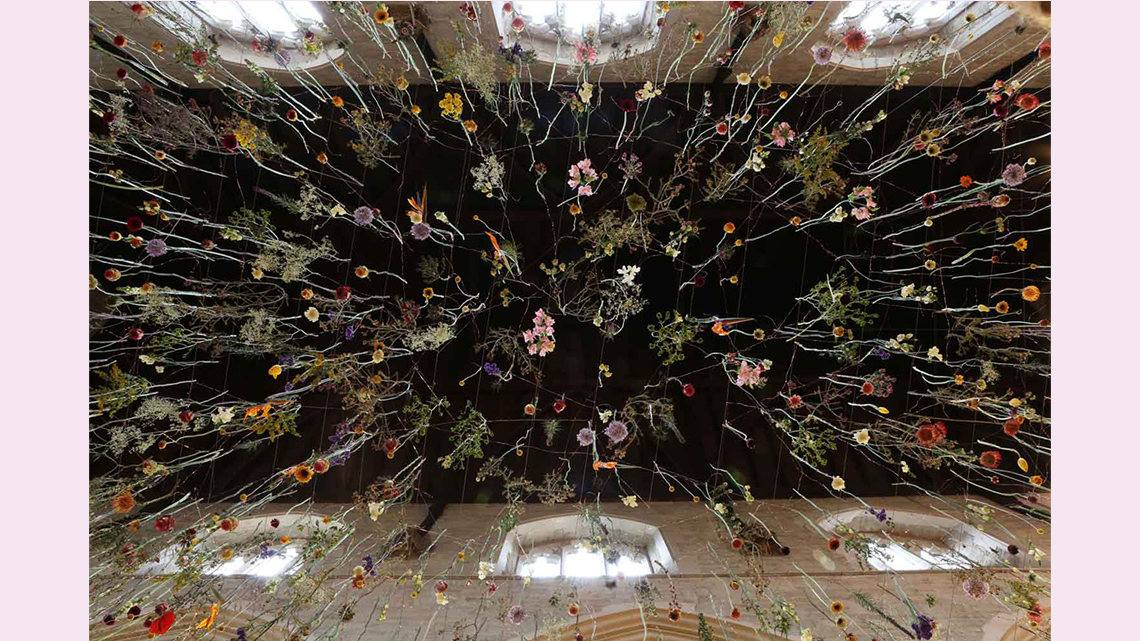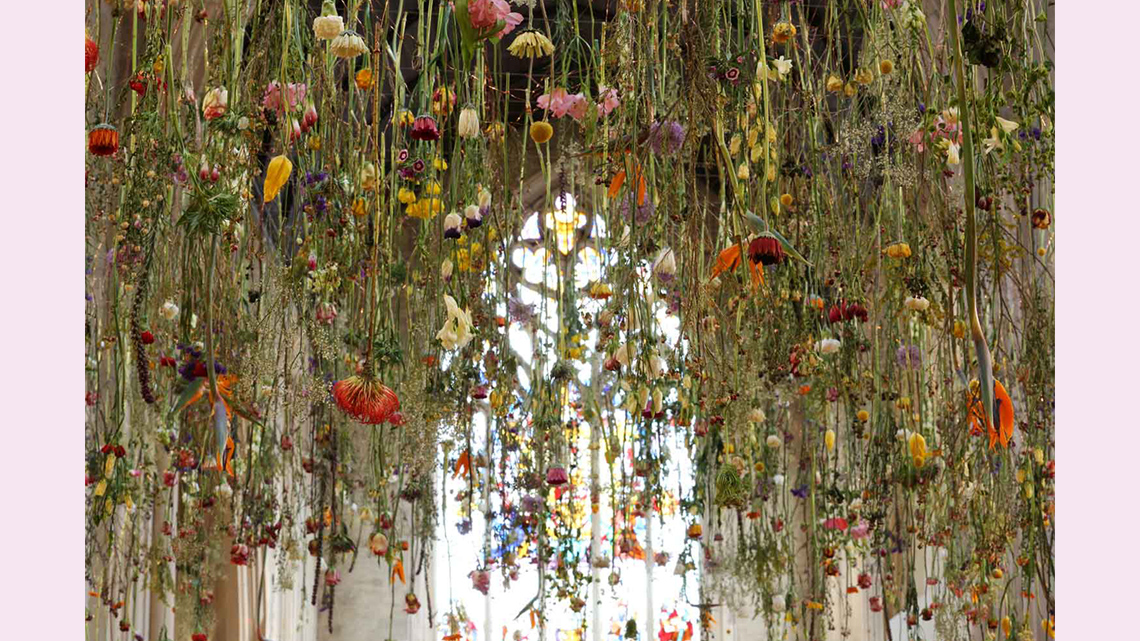Minds On
Let’s get started!
Considering sculpture
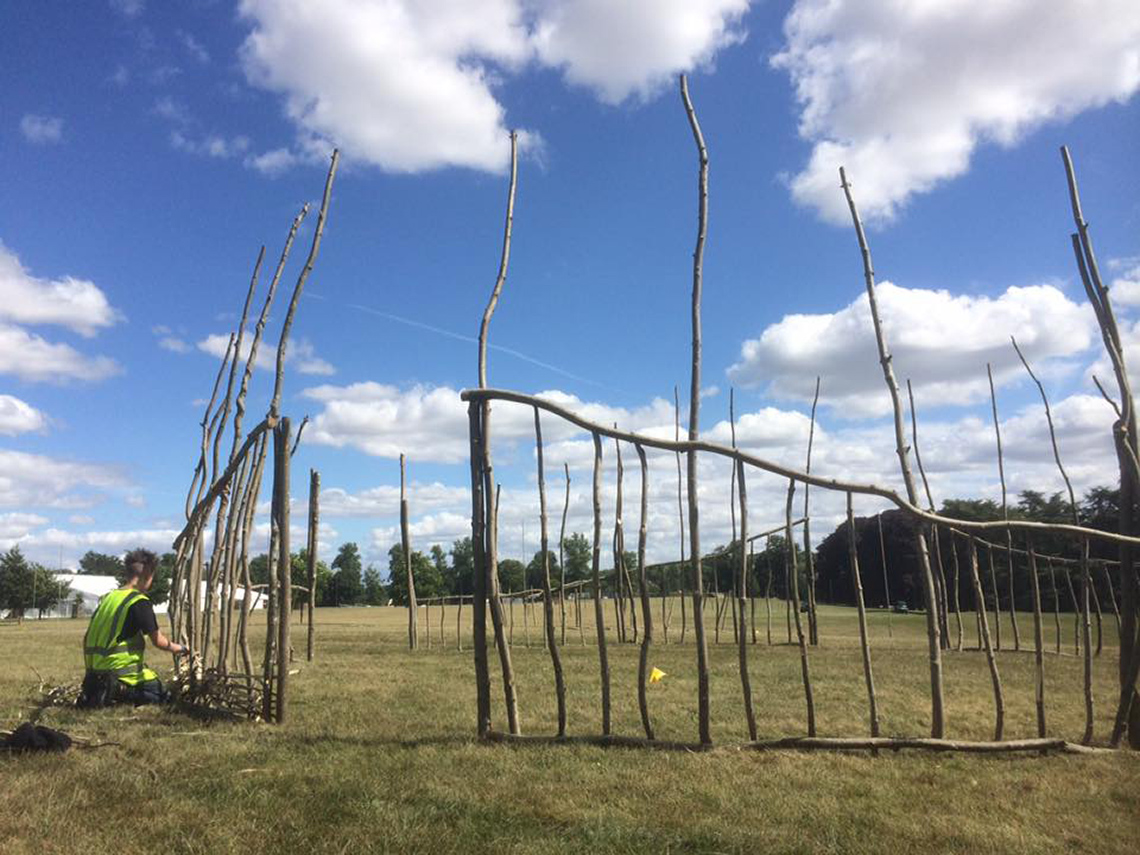
Sanctuary by Red Earth Arts Group, 2017
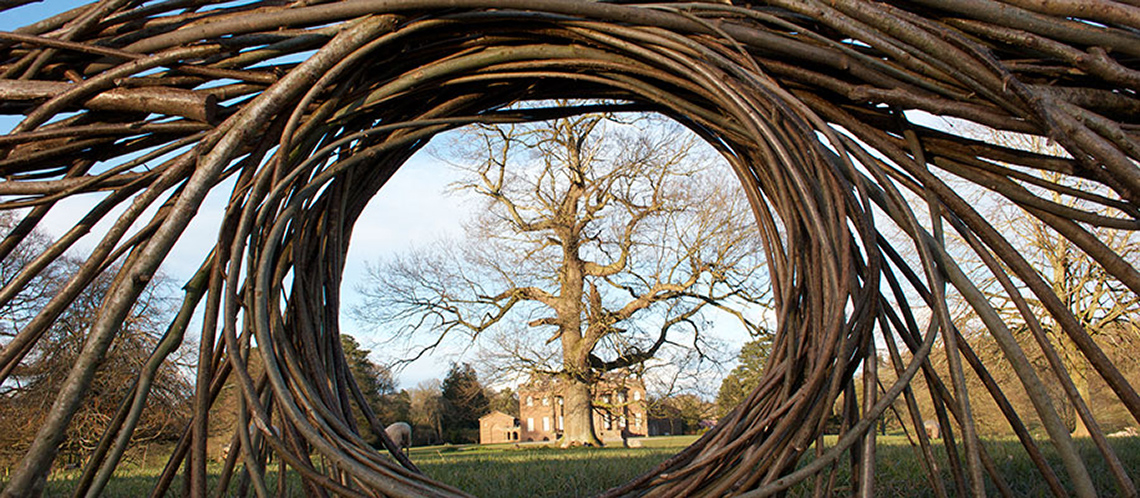
Genius Loci by Red Earth Arts Group, 2016-17
The sculptures explored in the previous images are created by a group of artists known as Red Earth. Caitlin Easterby and Simon Pascoe are the co-directors of the group Red Earth. They are artists who work with other artists to create art that contains the message of connecting people with the earth.
What is a sculpture?
One definition of a sculpture is art created in three dimensions with height, width, and depth. Sculpture is usually meant to be explored from all sides. Sculpture can be made by carving, cutting, hewing, casting, moulding, welding, or assembling materials. Materials may include bronze, marble, and wood among many other materials.
Create a list of materials that could be used in the creation of a sculpture.
You can record your ideas in a method of your choice or use the following mind map. The first three materials have been started for you.
Complete the Possible Sculpting Materials in your notebook or using the following fillable and printable document. If you would like, you can use speech-to-text or audio recording tools to record your thoughts.
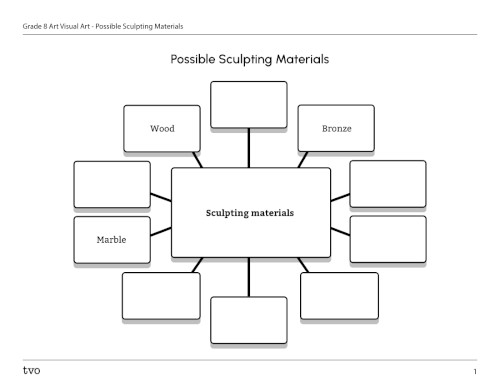
Press the Activity button to access the Possible Sculpting Materials.
Activity (Open PDF in a new tab)This learning activity will be focusing on sculptures created using natural materials. How many natural materials are in your mind map? What natural materials do you think could be sculpted? Add these materials to your mind map.
Action
Get ready, get set…
Sculpture can be an art installation
Sculptures are three-dimensional works of art, as was explored in the Minds On section. In some cases, an artist will create a sculpture to communicate a message that is bigger than the art itself. An example of this kind of sculpture is an art installation.
What is an art installation?
An art installation is an artwork that is created for a specific place or environment. The entire space is considered the piece of artwork. The artwork can be two-dimensional, three-dimension and/or time-based. Installation art is usually arranged at the site with careful instructions from the artist. Often the artwork interacts with the environment and the audience.
Installation art can be created indoors or outdoors. It can be temporary, or it can be permanent. Installation art is created to change people’s perceptions of that space. Some examples include museums or galleries, or it could be placed in a public space such as a field, park, or a forest.
When an artist creates an installation for a specific space, it is referred to as a site-specific art installation.
What is a site-specific art installation?
Site-specific art installations are works of art that use real space to help create the message expressed through the art itself. These installations may be found in urban spaces, natural settings, or even underwater!
Sometimes an art installation is permanent but in other situations the artist chooses to create a temporary installation in a chosen location. These specific pieces encourage people to examine their relationship to the space where the installation is placed in new ways by creating stories within that space.
Did You Know?
Did you know?
Site-specific artistic expression is found in the art of dance as well. When a dance piece is created in relation to a certain place, the location becomes as important as the dancer.
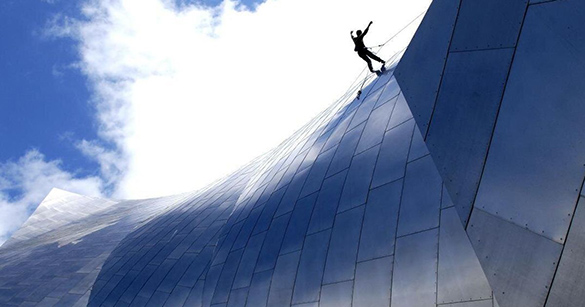
Rapture, directed and choreographed by Noémie Lafrance, 2008
Let’s explore an artist who uses natural materials to create art installations.
Andy Goldsworthy
Andy Goldsworthy is a British sculptor and photographer who creates installations using natural materials. He creates his work in locations such as forests and riverbeds using rocks, ice, leaves or branches and rearranges their natural forms to enhance their beauty. His work is meant to be temporary, meaning that as the landscape changes, his work slowly breaks apart or disintegrates. He envisions his work as part of the life cycle of nature.
“It’s just about life and the need to understand that a lot of things in life do not last.”
- Andy Goldsworth
Check out the following images of art by Andy Goldsworthy.
Use your understanding of three-dimensional art and site-specific installations to complete the following sentences.
For each sentence, choose the correct word.
Portfolio
Andy Goldsworthy
Do you think that Andy Goldsworthy’s art fits the definition of a site-specific art installation? Why or why not?
Record your answer in your art journal or using a method of your choice.
Press ‘Hint’ to consider ideas about Goldsworthy’s art.
Where does Goldsworthy create his installations? What is he using as his materials?
Environmental installation artists
Andy Goldsworthy’s work fits the definition of a site-specific artist. He is also considered an environmental installation artist.
Environmental artists are inspired by nature. They use nature as the material and the message for their artwork, which includes transmitting its beauty and encouraging those who witness it to care for the environment.
Let’s explore the work of other environmental artists.
Rebecca Louise Law
Rebecca Louise Law is an environmental artist known for her natural art installations. She often uses preserved flowers that have been individually sewn and suspended for people to move through and experience. Her work communicates messages of sustainability, consumerism, and life cycles as well as a reminder of the relationship between humans and nature.
Law has been collecting flowers and keeping them since 2003. She has a collection of over one million flowers which she repurposes in each new exhibition, which occur in museums and galleries around the world.
“Most of my installations are reflecting what’s happening in nature, by looking at plant
patterns or observing the way something grows. Then I imagine these themes in real life and
times that by a thousand so that it becomes fantasy.”
- Rebecca Louise Law
Explore the following examples of art by Rebecca Louise Law.
Rebecca Louise Law
Rebecca Louise Law
How does Law’s work fit the description of environmental art installation?
Is Law’s work site-specific art? Why or why not?
Record your ideas in your art journal or using a method of your choice.
Press ‘Hint’ to access some ideas to consider.
Consider the quote by Law to help you answer the first question. Where is Law’s work exhibited?
Agnes Denes
Agnes Denes is a Hungarian artist who works in many media and is well known for her environmental art.
Press the following tabs to explore examples of environmental art by Agnes Denes.
The environmental artwork Wheatfield – A Confrontation was created over four months in New York City in 1982. Denes planted a field of golden wheat over a space that was a landfill that was covered in rubble. Wheatfield was a symbol of environmental concern and drew attention and focus on the need to take greater care of the environment.
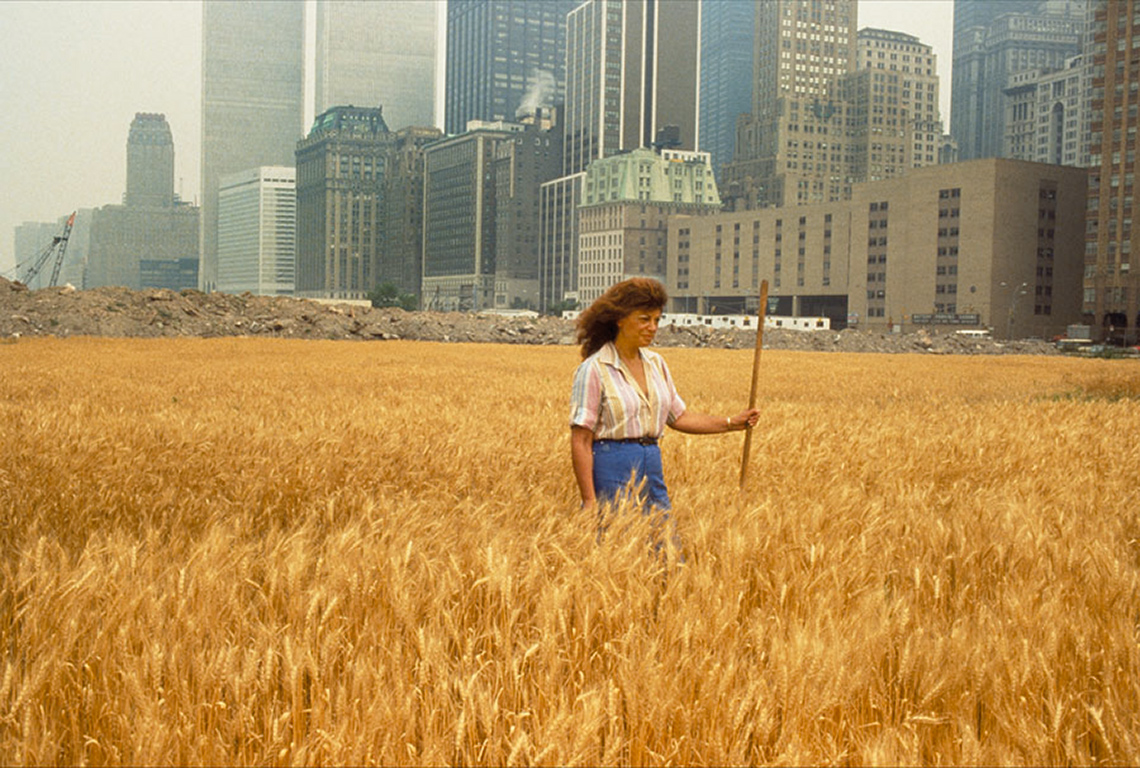
Wheatfield – A Confrontation by Agnes Denes, 1982
In Australia, Denes and volunteers planted 6000 trees from a variety of endangered species. She took care to create five spirals with the trees. As the trees grew, their height would naturally create a pyramid shape. Planting trees in a desert drew attention to environmental issues in Australia. Trees can help with environmental issues such as land erosion and the spread of deserts.
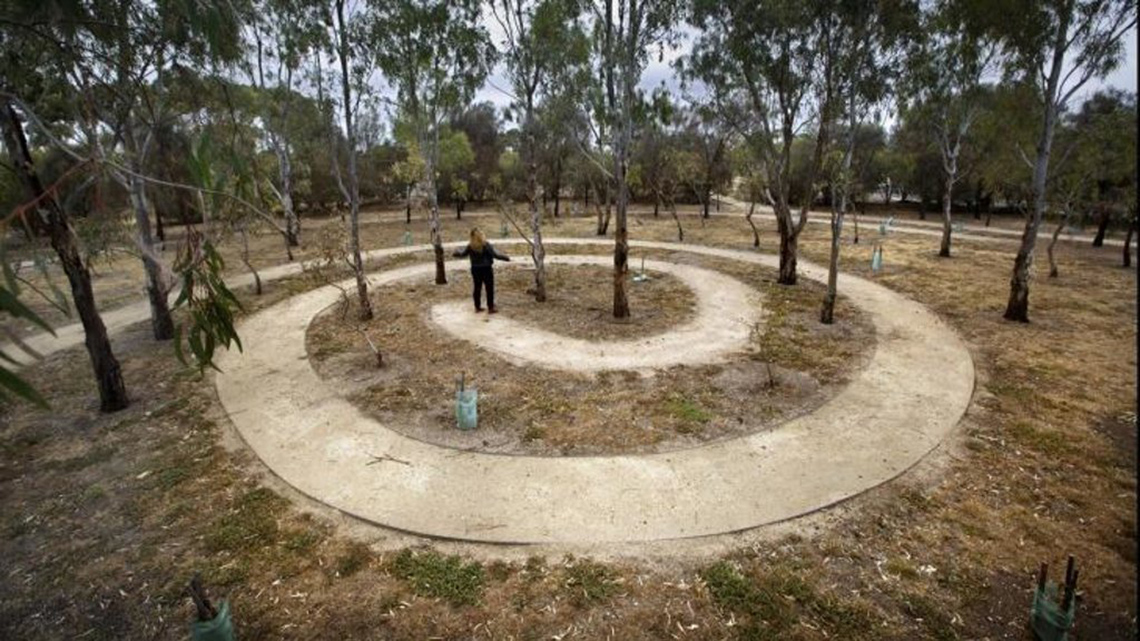
A Forest for Australia by Agnes Denes, 1998
Portfolio
Agnes Denes
How does Agnes Denes’ work fit the definition of site-specific art installation?
Record your ideas in your art journal or a method of your choice.
Press ‘Hint’ to consider ideas about her art.
Think about the locations of her pieces. What are the messages of the two art pieces you explored?
Indigenous knowledge
Although the artists in this learning activity are sharing their perspectives and their personal connections to the land through their art, these are not the only perspectives to consider. It is important to remember that Indigenous peoples have been engaging in the practice of sustainability and respect and connection to the land for generations.
In what we now call Canada, Indigenous peoples have been living on the land since time immemorial, or as long as can be remembered. With each generation, they have learned from their environment about how best to take care of it in a sustainable way as they have been living on the lands.
Did You Know?
What is traditional ecological knowledge?
Traditional ecological knowledge refers to the environmental knowledge and sustainable practices that Indigenous people have developed over centuries. This knowledge comes from generations of Indigenous peoples living on the land, each learning about specific plants, animals, environments, and the environmental factors that exist in a given area.
Even as time goes on, this knowledge adapts to the ever-changing environmental circumstances. Each Nation has its own beliefs, laws, and teachings regarding how to care for and sustain the Earth.
Check out the following video entitled “Climate Watch Shorts: The Elder’s Perspective” to learn more about Indigenous ecological knowledge. The video is an interview which asks Cree Elders from Omushkego First Nation about their perspectives on how the environment in their region is changing.
Portfolio
Environmental perspectives
Why might it be important to listen to Indigenous peoples and their perspectives when it comes to communicating the message of caring for the environment now and for future generations?
Record your ideas in your Art Journal or using a method of your choice.
Press ‘Answer’ to consider a possible idea about why Indigenous perspectives are important.
Indigenous peoples have developed their knowledge over centuries and are very connected to the land around them. People today can take the messages being shared by the environmental art installations and learn how to properly care for nature and the environment from the Indigenous elders.
Go!
Analyzing environmental art
Answer the following questions using your learning about environmental art installations and the three artists discussed in this learning activity.
In the following multiple choice activities, choose the phrase or the artist that best fits the sentence!
Consolidation
Putting it all together
Art response and reflection

For the following reflection questions, record your answers in your art journal or using a method of your choice.
Some environmental artists use art installations to communicate their message to an audience.
- How do you feel about using natural material to convey the message of humankind’s relationship with nature? Why? Use examples of the pieces in this learning activity to support your thoughts.
- Choose one of the artists and express how you feel about their process of creating environmental art installations.
Consider the following quote by Andy Goldsworthy discussing his message as an environmental artist.
“We often forget that we are nature. Nature is not something separate from us. So, when we
say that we have lost our connection to nature, we’ve lost our connection to ourselves.”
– Andy Goldsworthy
Which pieces explored in this learning activity help to communicate Goldsworthy’s message? Why?
Consider the subject matter one of the artists that was explored in this learning activity.
What natural material is included in the artwork? How does this material help to deliver the artist’s message?
What is your personal response to site-specific art installations and environmental art installations? Why?
Reflection
As you read the following descriptions, select the one that best describes your current understanding of the learning in this activity. Press the corresponding button once you have made your choice.
I feel…
Now, expand on your ideas by recording your thoughts using a voice recorder, speech-to-text, or writing tool.
When you review your notes on this learning activity later, reflect on whether you would select a different description based on your further review of the material in this learning activity.
